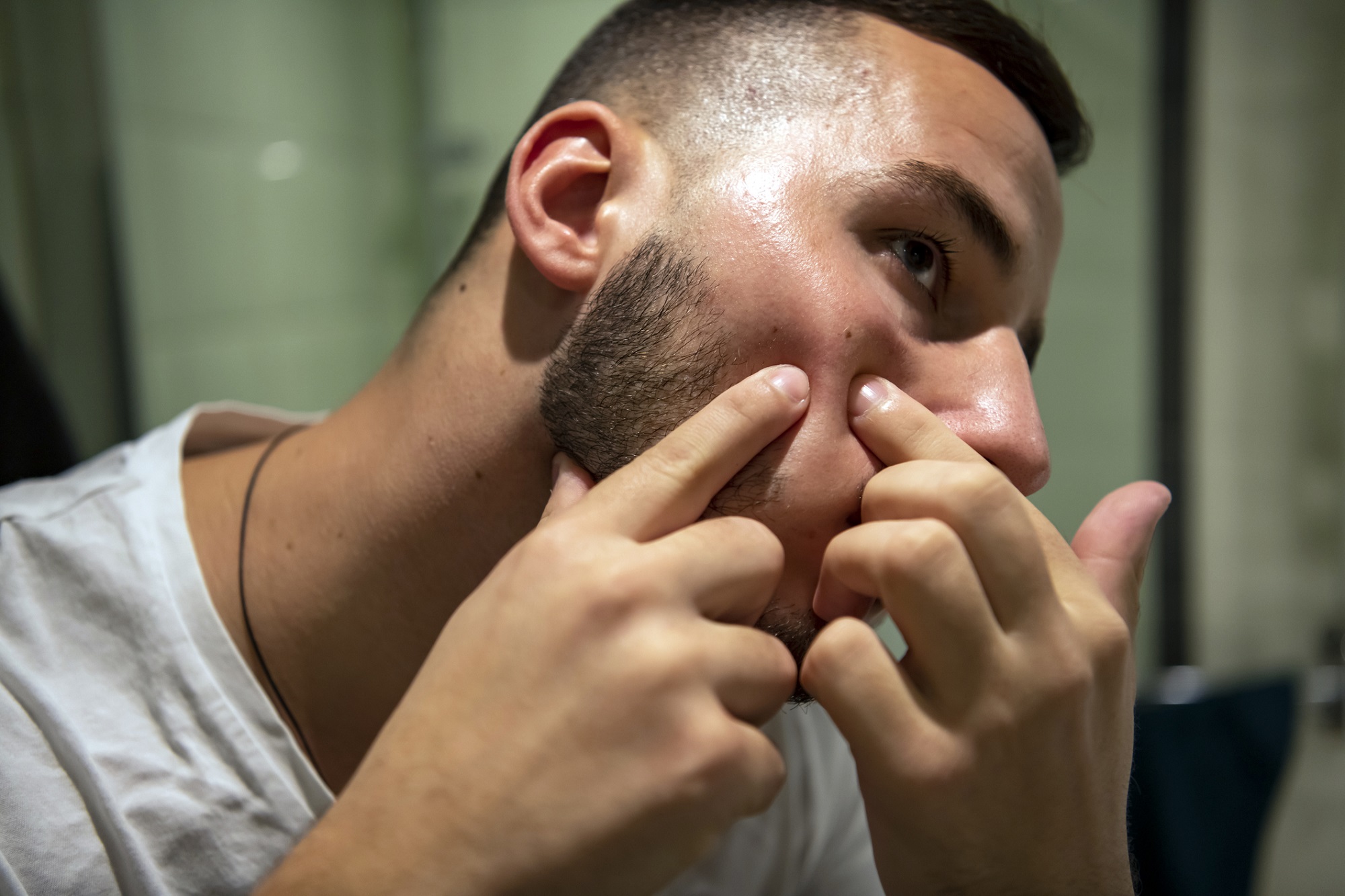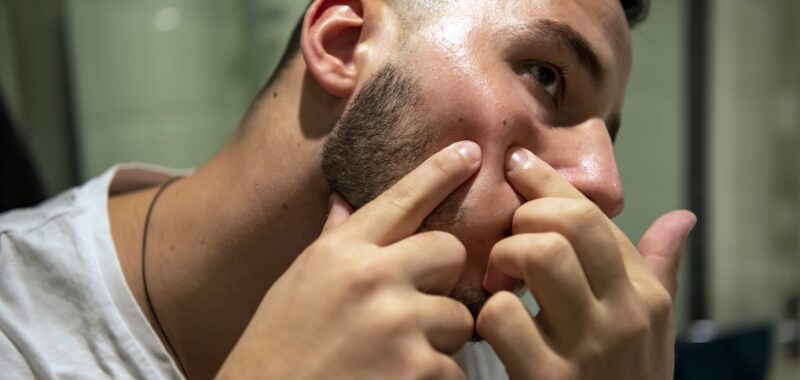
A study published in Cosmetics found that both a single nanoemulsion essential oil and a combination of essential oils were useful in treating acne. A tea tree nanoemulsion and combination of four essential oils benefitted adult men with noninflammatory acne.
“According to the results presented in this study, it appears to be important for an anti-acne cosmetic formulation to contain a melaleuca essential oil, which provides terpinen-4-ol,” the authors write.
Noninflammatory Acne and Essential Oils
Factors that contribute to acne lesions include abnormal keratinization, altered sebum production, colonization of hair follicles and the release of inflammatory mediators into the skin. Diet, genetics and insulin resistance are also at play.
Essential oils have been shown to benefit cosmetic formulations in recent research. Terpenes — secondary metabolites with biological properties — within essential oils can benefit skin health. One of the most extensively studied EO for skin health is tea tree oil. It has been shown to improve acne, photoaging and oral candidiasis. Other EOs including lavender, eucalyptus and citrus oils are used in cosmetics, medicine and the food industry.
One challenge to incorporating EOs into pharmaceutical or cosmetic products is their low water solubility and high volatility. However, nanoemulsions can offset these characteristics, hence the inclusion of a nanoemulsion EO in this study.
Study methods
This randomized placebo-controlled double-blind clinical in-vivo study included 53 male participants. Participants were between 18 and 28 years of age and had non-inflammatory acne. Four groups were created: a mixture of lavender, eucalyptus, tangerine and tea tree; nanoemulsion of tea tree; pure tea tree essential oil and placebo. The formulations were applied for 90 days, and skin imaging was done before and after the study. Participants also used an SPF 50 sunscreen for 15 days prior to the study and throughout.
The authors used a 5-pt scale to categorize visible comedones, macroscopic imaging, RCM imaging and skin imaging.
Results
The product with nanoemulsion of tea tree oil showed the most promising results for reducing comedone areas, particularly in the infundibular region, the authors write. This is likely due to a combination of terpinene-4-ol within the oil and the effects of nanoemulsion.
“After 90 days, the 4EO and nanoemulsion groups showed the most favorable results as they reduced the number of pilosebaceous units with dysmorphic shape and decreased the number of altered pilosebaceous units,” the authors write. They also improved follicular hyperkeratinization.
For all four groups, a reduction in number of comedones, hyper keratinization and the number of units with internal amorphous material was observed, but the placebo group was not statistically significant when compared to the other groups for internal amorphous material.
The authors also report the main terpenes within each of the four essential oils studied. These included: d-limonene in tangerine EO, 1,8-cineole in eucalyptus EO; linalool and linalyl acetate in lavender EO and various forms of terpinene and 1,8-cineole in tea tree EO.
“Notably,” the authors write, “the utilization of the nanoemulsion demonstrated superior outcomes in reducing pilosebaceous areas, particularly in the deeper layers of the skin.” This, they suggest, highlights the importance of innovative delivery systems.
“An important additional observation in this study was that all the groups showed some improvement in non-inflammatory acne,” the authors write. This could be attributed to the daily use of sunscreen for all participants. “It is well-known that unprotected sun exposure can exacerbate the process of hyperkeratinization.”
Source:
Cosmetics. 2023, 10(6), 158; https://doi.org/10.3390/cosmetics10060158
“Characterization and Efficacy of Essential Oil-Based Cosmetic Formulations for Acne-Prone Skin”
Authors: Hugo Pacagnelli Infante, V., et al.

